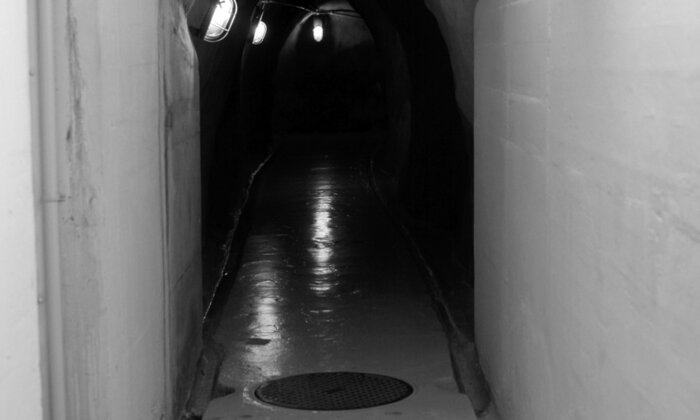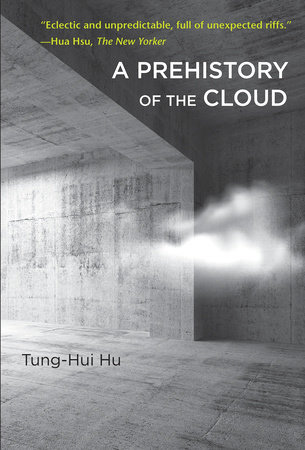The Melancholy of New Media

In May 2010, a consortium of European libraries and research institutions entombed a metal box containing our collective “digital genome” in a former Swiss Air Force bunker beneath the Alps, taking inspiration from seed banks and animal genome projects. Though the act was in part a publicity stunt, the box also bore deadly serious news: Digital media, the supposedly immortal replacement for analog media, is itself subject to decay, even death. Rather than a perfect replacement for the organic (and thus impermanent) mediums of paper or microfilm, they explain, digital media is in fact “brittle and short-lived.”
Part of this reflects the physical substrate on which digital media is kept: A recordable DVD lasts perhaps 15 years before the dye fades, with some brands showing ill effects in as soon as 1.9 years; magnetic hard drives fare worse. A bigger problem is the rapidly changing nature of file formats and decoding systems, which produce a condition in which a user can rarely open a file created a decade ago without significant difficulty. In one famous example, the BBC’s 1986 “Domesday Project” was conceived 900 years after the original Domesday Book and intended to be read 900 years into the future. But programmed in the obsolete BCPL language, stored on an equally obsolete laser disc, and requiring a modified Acorn BBC Master computer to view, it was essentially unusable a mere 16 years later. There is, as the consortium’s project dramatized, no such thing as pure information; digital media is always tied to the systems of encoding that make it understandable.

Addressed to the data archeologist of the future who might decipher its contents, the “digital genome” box included five digital files — a sample JPEG image, an HTML webpage, a QuickTime movie, a PDF document, and a Java program — along with the 6,085 associated other files required to decode, convert, or view those file formats, stored on mediums from punch cards to DVDs. But the box is not accessible to any user in the current moment; instead, the box is a time capsule to dramatize the problem of digital preservation. The primary purpose of sealing the box inside a data bunker named “Swiss Fort Knox” — located somewhere near Saanen, Switzerland, though the exact location is a closely guarded secret — ensures that the box is hidden from view. Sent into a quiet and undisturbed limbo, it now waits for a future moment when these “digital genomes” may be reanimated and resurrected, like new plants grown from the seeds of extinct plants.
Sent into a quiet and undisturbed limbo, the time capsule now waits for a future moment when the “digital genomes” may be reanimated and resurrected, like new plants grown from the seeds of extinct plants.
The consortium’s project, named Planets, presents a common narrative from the field of digital preservation. The consortium’s brochure opens with an illustration graphing the declining lifespan of each successive media: clay tablet, papyrus, vellum, and so forth, finishing with magnetic tape, disk, and optical media. And the burial project itself states the case for a digital genome by describing the inevitable changeover from analog to digital: “We do not write documents, we word-process. We do not have cameras and photo albums, we have digital cameras and Photoshop. We do not listen to radios and cassette.” The implication, the consortium makes clear, is that each medium has a certain lifespan, after which it becomes replaced by the next one. Yet what is most interesting about this narrative is how it frames media as either living or dead by contrasting the “live” updates of an Internet-connected database with a “dead” one: “The term database suggests a living entity; is a dead or decommissioned database still a database?”
By doing so, the Planets project picks up on a widespread rhetoric of media as dying or dead, with each “death” and “birth” of a medium said to signify a historical rupture or break. In a historiographic model Paul Duguid termed “supersession,” each successive medium is said to kill off the previous one. Duguid illustrates supersession by quoting Victor Hugo’s archdeacon: “This will kill that. The book will kill the building . . . The press will kill the church . . . printing will kill architecture.”
At roughly the same time as the publication of Duguid’s historiography, Bruce Sterling put the phrase “dead media” into circulation with his 1995 “Dead Media Manifesto,” which called for a community of “communications paleontologists” to track down obsolete and completely forgotten medias — everything from Incan quipus, a counting system using knots on string, to Victorian phenakistoscopes, a pre-cinematic moving image technology. More recently, a number of media scholars have expanded the field of media archeology to include objects that are marginal or obsolete, but not entirely gone, such as vinyl records, Polaroids, and typewriters: These are termed media that are “living dead” or, alternately, “zombie media.”
While this list of dead or about-to-die media focuses largely on analog or physical medias, the consortium’s project suggests that even today’s newest digital media are types of “living dead,” in mortal danger of perishing. A PDF file, for example, is already on its deathbed because it is in a proprietary format, while many contemporary messages are encrypted, making a single-sentence e-mail message unreadable in the future without a massive pool of supercomputing power.
I do not write to challenge this narrative of dying and resurrection; instead, I argue that this fantasy allows us to understand a hitherto invisible aspect of the relationship between old and new media. For there is something excessive, even extravagant, at the heart of these fantasies. Though the digital genome project was assembled by a sober-minded consortium keenly concerned about the future of preservation — including the British, Austrian, Dutch, and Danish national library systems, the state archives of Switzerland, and a number of European universities — they chose to bury their box inside a former Swiss Air Force data bunker guarded by bulletproof checkpoints and 24-hour surveillance systems, electromagnetic pulse protection, negative pressure systems to flush out chemical weapon attacks, and “hermetically sealed” air gaps. But as data security scholar Steven Murdoch comments on the Swiss bunker project, “The threat of a rogue system administrator deleting all the data because they know they are about to be fired is orders of magnitude more likely than an EMP [electromagnetic pulse] or invasion. The fact that the hosting centre is under a mountain doesn’t stop the system administrator corrupting the backup files stored there.”
Why a physical bunker, then, which always seems to exceed the technical requirements for storing data in the long term? This excess provides us with a clue. The consortium and similar digital preservation projects talk about media in terms of their death, then respond to this “living death” by sealing the media inside a crypt for an indefinite period of time. They hope to one day recover these memories by decrypting the data or words hidden inside of them.
Data bunkers allow the death inherent in disaster to be contained by transmuting it into something like limbo: waiting, suspension, a “living dead.”
But there is a better term to describe this phenomenon: melancholia. As psychoanalysis tells us, melancholy is a result of a loss, whether the actual death of a loved one, or a more metaphorical loss, such as the loss of an ideal. Though related to mourning, melancholy is unlike it on one crucial point: The loss is so painful that the melancholic disavows that loss, internalizing and burying an identification with the lost object within him- or herself. While a rejected lover may mourn the person who has spurned him or her and then move on, an individual who is gripped by melancholy is unaware of the full extent of this loss. Yet inside his or her psyche, analysts Nicolas Abraham and Maria Torok explain, that phantom-like “shadow of the [lost] object” endures indefinitely, secretly hoping for its resurrection or reincarnation.
Melancholy, in short, is something of a preservative. A crypt is created within the psyche that conceals a trace of the lost object, a libidinal space that simultaneously sets the object apart — marks it as belonging to the realm of the dead or gone — but also keeps a version of it alive. Lodged like a parasite inside the subject, the phantom remains inaccessible and encoded as it waits for its eventual reincarnation (or, at least, its decryption). The melancholic’s response thus fits the fantasy produced by a bunker: As Virilio writes, the bunker is another name for “the crypt that prefigures the resurrection.”
The fever around data bunkers, manifested in the desire to secure or defend data, is in fact a melancholic attachment to the data. Just as the melancholic creates a psychic architecture to hold and preserve its lost object, the data bunker closes off the “outside” in order to secure data from external threats. Because a data bunker is in effect a crypt for our data, the data bunker is not just a symptom of a melancholic’s desire, but the very architecture of that melancholy.
Data bunkers allow the death inherent in disaster to be contained by transmuting it into something like limbo: waiting, suspension, a “living dead.” In Derrida’s explanation of melancholy, the melancholic’s crypt always contains “a living dead, a dead entity we are perfectly willing to keep alive, but as dead.” In the name of preserving its contents, a data bunker is a phantasmatic structure that excludes media that are “dying” from the time of everyday life, and excludes “dead” media from living media. Data inside the cloud — namely, digital data — are marked off from outside data — namely, analog data.
The result is an agonistic dynamic which portrays older media as dying or dead. The bunker user sees the digital in opposition to analog, or new media in opposition to old media (as with the time capsule project). In certain cases, analog data may be converted, transferred, and thus admitted into the cloud, but in the process, these data are marked as somehow different, as not “natively” digital. (The digitized book is never the book; it is the formerly analog book, the book that is viewed as a foreign object.)
To bring this discussion to a head, the idea of loss may seem like a purely theoretical or technical concern that belongs to the realm of data preservation. And yet, it is activated by a larger imagination of disaster produced by the cloud, one that can easily slide between mundane concerns about formatting errors and concerns about national security. This imagination produces two impulses, which coalesce in the data bunker: first, a paranoid desire to preempt the enemy by maintaining vigilance in the face of constant threat, and second, a melancholic fantasy of surviving the eventual disaster by entombing data inside highly secured data vaults. Comments one electronic records archivist on the Swiss Fort Knox project, “We need more projects of this nature: time capsules containing other types of digital objects, storage media, software, hardware, and documentation should be placed in Iron Mountain and other undeground storage facilities . . . statistically speaking, we are really overdue for a deadly pandemic, and the next global war will likely have a nuclear component.” The archivist’s melancholic reflection on the loss of digital media redoubles back onto a paranoid imagination of a nuclear war that is to come. One bunker does not assuage the problem, but only multiplies the crypt-like structures deemed necessary to house our data.
As Virilio describes, a visitor to a bunker is “beset with a singular heaviness; in fact he is already in the grips of that cadaveric rigidity from which the shelter was designed to protect him.”
In “Bunker Archaeology,” Virilio laid out this paradox: Even as possibilities of an imagined time “after the resurrection” fill the melancholic with a sense of expansiveness, the immobility and weight of the bunker itself transfers onto his or her body. In a sense, the thingness of the defensive structure built around a melancholic’s data has come to possess its owner.
As Virilio describes, a visitor to a bunker is “beset with a singular heaviness; in fact he is already in the grips of that cadaveric rigidity from which the shelter was designed to protect him.” That shelter weighs on the visitor, “grips” the visitor, to the point where he even empathizes with and internalizes its objecthood. It is perhaps for this reason that we seem to take comfort in the militarized presence of the bunker’s building itself — the blastproof walls, the armed security guards — as a defense from these imagined threats, whether the threats are cyberwarfare brigades, hackers, or even the gentler “death” of digital media itself.
Tung-Hui Hu, a former network engineer, is an associate professor of English at the University of Michigan and the author of several books of poetry, as well as “A Prehistory of the Cloud,” from which this article is excerpted. Hu has received awards from Yaddo, the MacDowell Colony, the National Endowment for the Arts, and the American Academy in Berlin



